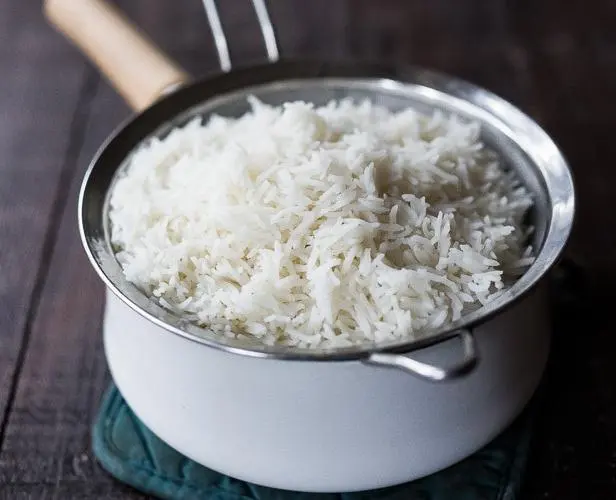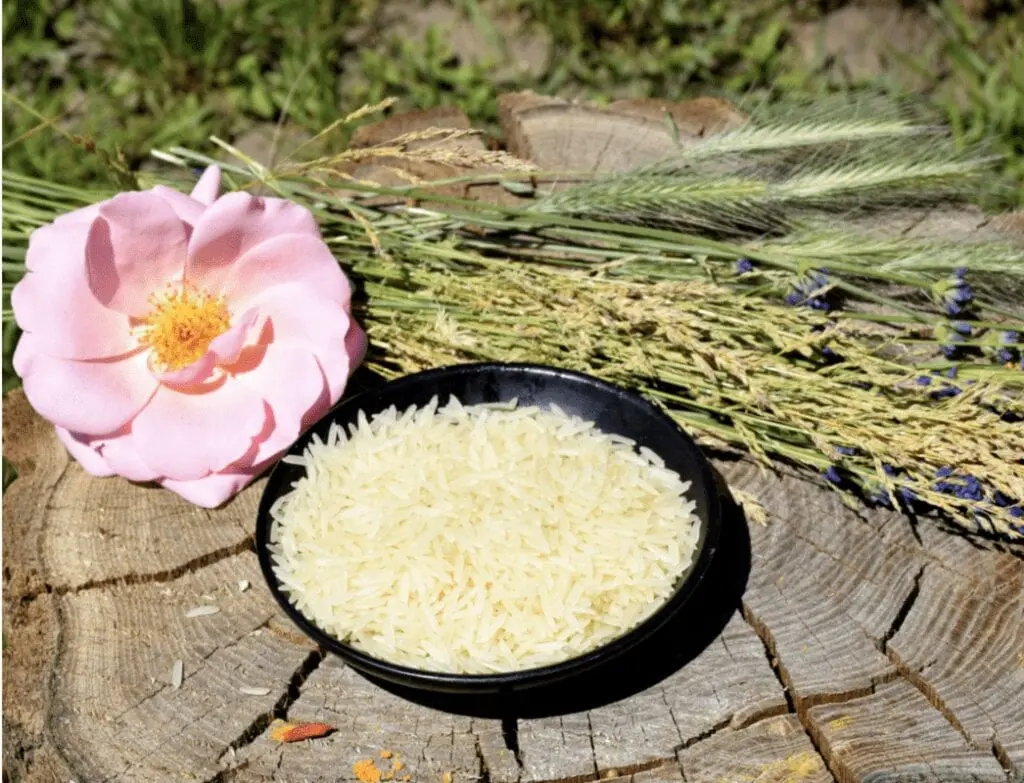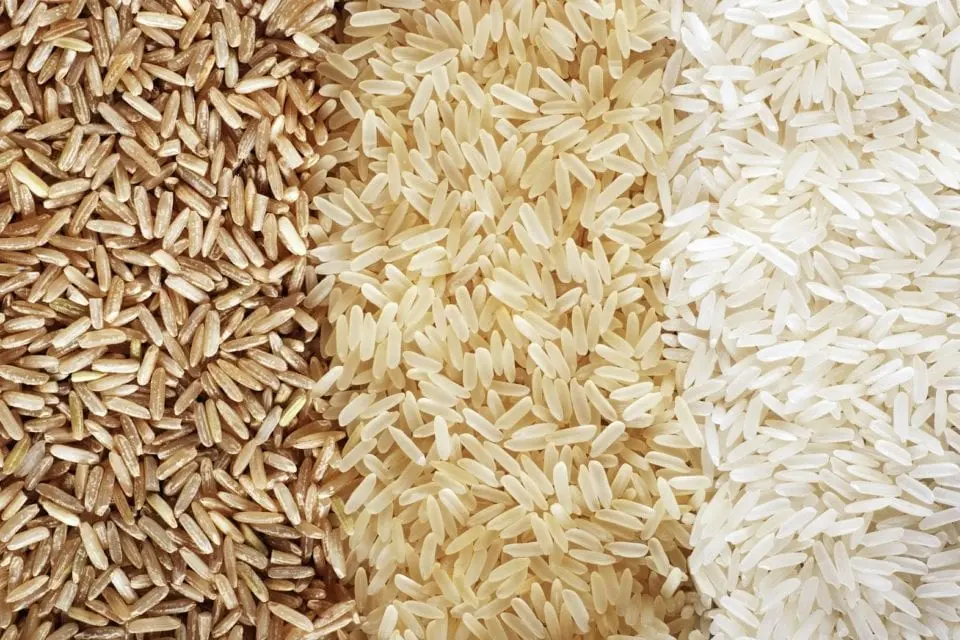Contents
Description
Basmati is a type of rice of the Oryza sativa cultivar. The very word basmati – basmati – means “fragrant.” In its homeland, northern India, this rice has a name – the grain of the gods, and it forms the basis of the diet of the country’s population.
Historically, this type of rice grew on snow-fed terraces and temple-dotted foothills of the Himalayas and the Indo-Chinese plains of northern India and Pakistan below them.
Each of these two countries insists that only its unique terroir gives Basmati the unique aroma and taste that the holy books and chronicles have described for thousands of years.
Basmati is delicate long grain rice. One of the few who withstood the dominance of transgenic hybrids from the USA and Australia. At home, this rice type is an essential part of special meals.
Rice harvesting (September to December) in northern India also coincides with the holiday season. Usually, they serve this rice in the pilaf with beans, almonds, raisins, spices, and lamb biryani, which has always had basmati in the traditional recipe. It perfectly sets off. It absorbs the aroma of vegetables, meat, and spices.
Basmati rice has a flavor that many people resemble popcorn and nuts. For its incredible benefits and original taste, it gained the second name “king of rice.” This rice that goes on sale is usually 12-18 months old, like a good wine. This increases the hardness of the grains.
This variety has long and thin grains, which do not boil and retain their shape after heat treatment. There are several traditional types – # 370, # 385. There are also brown varieties and hybrids.
Basmati origin story
The name of Basmati rice comes from the Hindi language and literally means fragrant. The cultivation of the culture began about three thousand years ago. The first mention in the literature was in 1766, in the poem of Khir Ranja. Initially, the word basmati meant any rice with an unusual aroma, but the name stuck to the modern species over time.
Types of Basmati Rice
Basmati rice is available in white and brown, i.e., not polished, versions. Besides, it has several official varieties.
Traditional Indian species are Basmati 370, Basmati 385, Basmati 198, Pusa 1121, Riza, Bihar, Kasturi, Haryana 386, etc.
The official Basmati varieties from Pakistan are Basmati 370 (Pakki Basmati), Super Basmati (Kachi Basmati), Basmati Cannabis, Basmati Pak, Basmati 385, Basmati 515, Basmati 2000 and Basmati 198.
People usually distinguish them by the length and color of the grains – from snow-white to caramel.
Composition and calorie content

- Calories: 303 kcal.
- Energy value of the product Rice Basmati:
- Proteins: 7.5 g.
- Fat: 2.6 g.
- Carbohydrates: 62.3 g.
Basmati rice contains many amylases, so people with pancreatic insufficiency should use it, cystic fibrosis (damage to the endocrine glands), and acute, chronic hepatitis toxicosis in pregnant women.
Beneficial features

Basmati has the following positive effects:
- Supports the normal functioning of the gastrointestinal tract thanks to fiber.
- Starch helps maintain blood sugar levels.
- The contained elements have a positive effect on the heart and pancreas.
- The high phosphorus content maintains bone strength.
- Eating the right diet with This kind of Rice will help keep your weight on track, but you should consult your dietitian before using the product as a basis for nutrition.
Contraindications and side effects

Basmati is safe to eat, but it should be used with caution by overweight people and constipation and bowel disease. Do not give these groats to children under three years old, and you should not give it more than 3 times a week under 6.
In small portions, rice is healthy, but excessive consumption provokes the following side effects:
- intestinal obstruction;
- stagnation of products in the gastrointestinal tract;
- dizziness;
- muscle malaise;
- tachycardia;
- drops in blood pressure.
By now, many different diets and fasting days are based on Basmati. Despite their popularity and effectiveness, you must use them with caution and only with a doctor’s permission.
How to choose and store Basmati rice
Basmati Rice is available by weight and package. When buying packaged rice, it is important to check the expiration date printed on the packaging, as the natural oil it contains can cause the rice to turn rancid if stored for too long.
Besides, you need to pay attention to whether the rice contains debris, insects, or signs of contact with moisture. Rice will last long enough in a dry, tightly closed container in a cool place, but not in the refrigerator.

It is important to know! Because the real Basmati is difficult to distinguish from other types of rice, as well as the significant difference in price between them has led to fraudulent actions among some traders who pass off cheap varieties of long-grain rice for Basmati.
Taste qualities of Basmati
How many types of rice exist, so many shades of its taste stand out, which, moreover, strongly depends on the method of preparation. For example, white rice is sweeter, while brown rice has a spicy, nutty flavor.
A whole palette of tastes is revealed when you get acquainted with various “national” rice types. For example, Indian basmati and airy are quite similar to popcorn, while the Thai variety “Jasmine” has a subtle milky flavor.
Depending on how the rice was cooked and what ingredients were used in the dish, its taste also changes. The grain is easy to make sweet, sour, spicy, salty – at the cook’s request.
Cooking applications

Rice is good both, boiled or fried; it can be used for sweets and casseroles. The product goes well with meat, seafood, poultry, and fish. It is a popular ingredient in soups, risottos, side dishes, and pies. In China and Japan, it is even the raw material for making alcoholic beverages.
Almost every national tradition can boast of a rice dish. For Japan, this is sushi. In Southeast Asia, original desserts are prepared from grains, and the pride of Caucasian cuisine, of course, is pilaf.
Each dish requires a different kind of rice. For example, a crumbly side dish they make from long-grain. Medium-grain is added to soups, round-grain is used for cereals, casseroles, and sushi. Rice flakes are poured over with milk and eaten for breakfast, and the airy look is good for making kozinak.
To emphasize rice’s taste, you can cook it not in the water but broth, add a variety of spices (turmeric, cumin, cinnamon, oregano), and pour with lemon juice any sauce. If you need porridge, sprinkle the rice with sugar, season with butter, honey, nuts, fruits, or yogurt.
How to cook perfect dish from this cereal – watch in the video below:
Conclusion
Basmati rice is a product with a rich composition and useful properties. Many dishes have been invented based on cereals, many of which belong to Indian cuisine. When composing a diet with rice, take precautions not to overuse the product.










